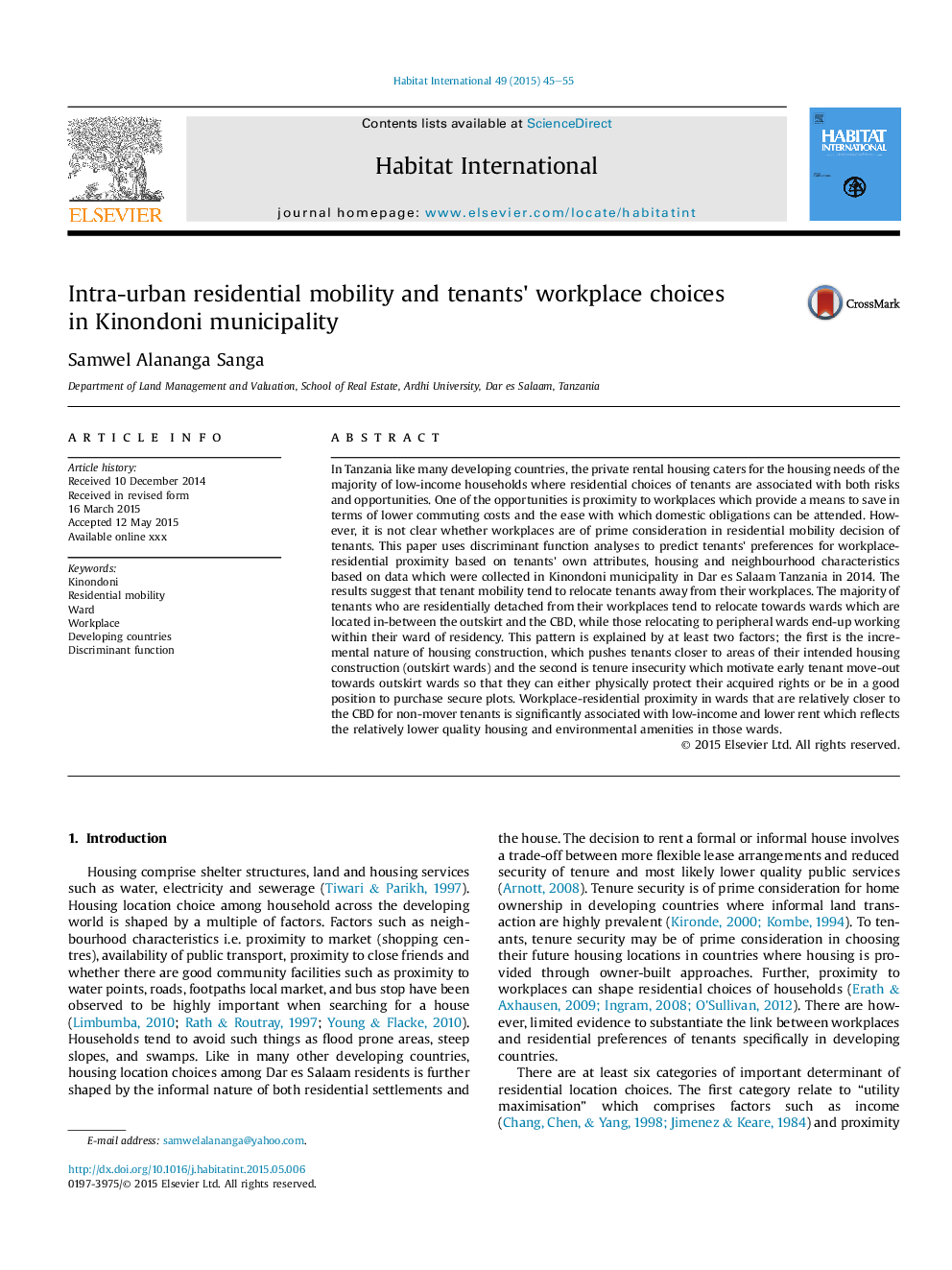| Article ID | Journal | Published Year | Pages | File Type |
|---|---|---|---|---|
| 7456051 | Habitat International | 2015 | 11 Pages |
Abstract
In Tanzania like many developing countries, the private rental housing caters for the housing needs of the majority of low-income households where residential choices of tenants are associated with both risks and opportunities. One of the opportunities is proximity to workplaces which provide a means to save in terms of lower commuting costs and the ease with which domestic obligations can be attended. However, it is not clear whether workplaces are of prime consideration in residential mobility decision of tenants. This paper uses discriminant function analyses to predict tenants' preferences for workplace-residential proximity based on tenants' own attributes, housing and neighbourhood characteristics based on data which were collected in Kinondoni municipality in Dar es Salaam Tanzania in 2014. The results suggest that tenant mobility tend to relocate tenants away from their workplaces. The majority of tenants who are residentially detached from their workplaces tend to relocate towards wards which are located in-between the outskirt and the CBD, while those relocating to peripheral wards end-up working within their ward of residency. This pattern is explained by at least two factors; the first is the incremental nature of housing construction, which pushes tenants closer to areas of their intended housing construction (outskirt wards) and the second is tenure insecurity which motivate early tenant move-out towards outskirt wards so that they can either physically protect their acquired rights or be in a good position to purchase secure plots. Workplace-residential proximity in wards that are relatively closer to the CBD for non-mover tenants is significantly associated with low-income and lower rent which reflects the relatively lower quality housing and environmental amenities in those wards.
Related Topics
Social Sciences and Humanities
Social Sciences
Development
Authors
Samwel Alananga Sanga,
